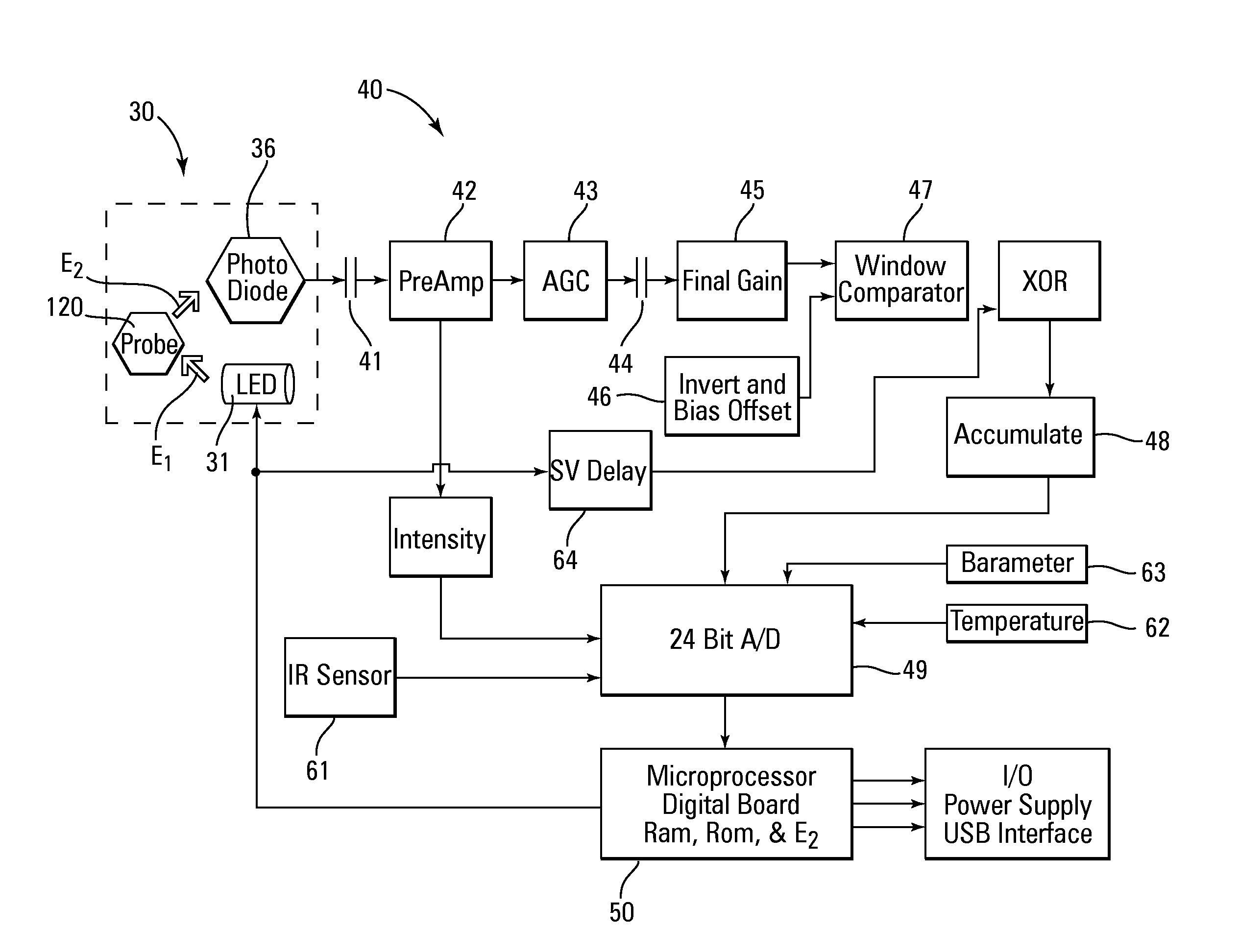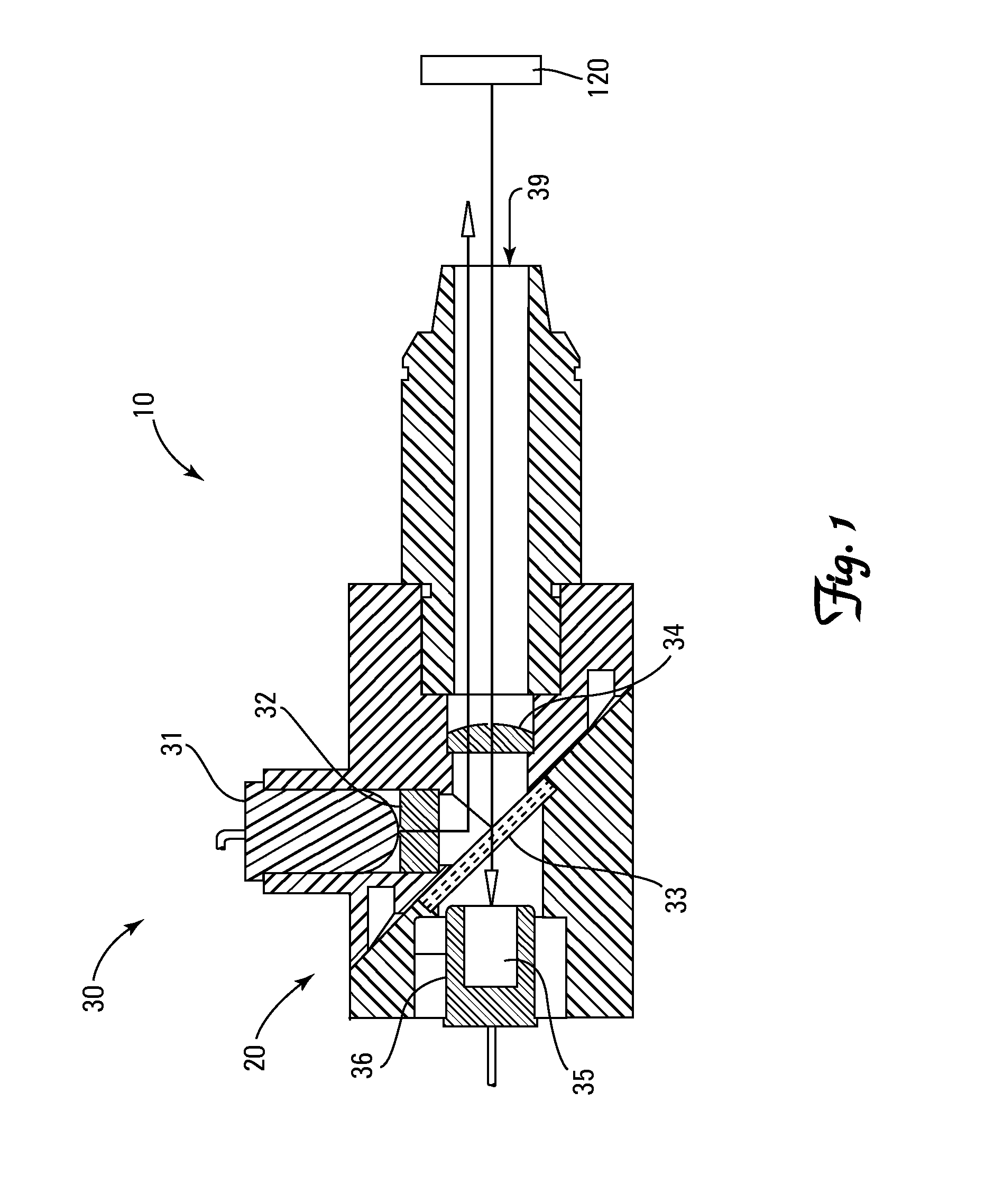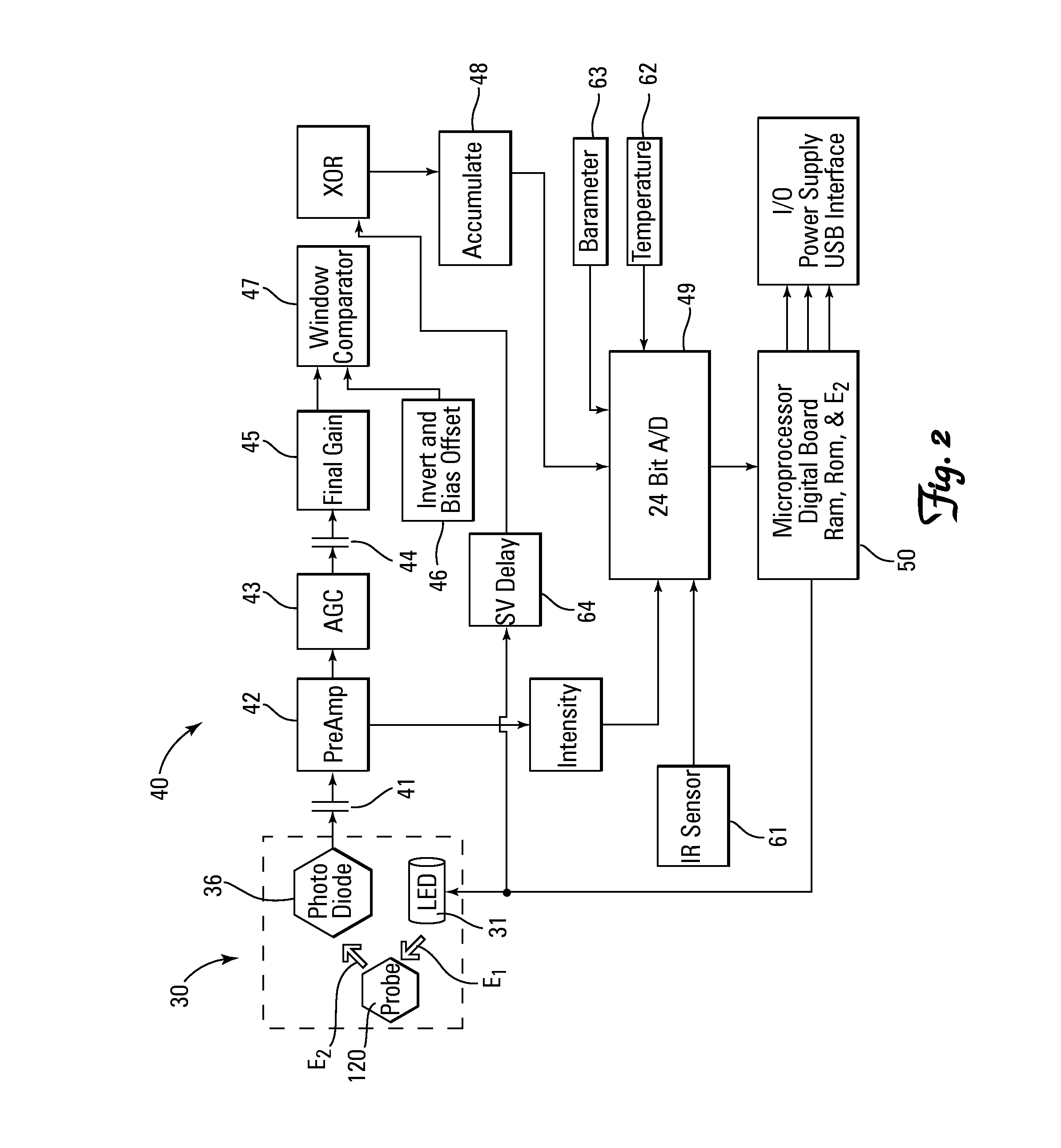Luminescence lifetime based analyte sensing instruments and calibration technique
a technology of analyte sensing instruments and lifetimes, applied in the direction of instruments, calibration apparatus, fluorescence/phosphorescence, etc., can solve the problems of producing calibration errors and complicating calibration efforts
- Summary
- Abstract
- Description
- Claims
- Application Information
AI Technical Summary
Benefits of technology
Problems solved by technology
Method used
Image
Examples
example 1
(Creation of Stern-Volmer Plot)
[0102]Luminescence lifetimes τ of a PtOEPK probe 120 exposed to known concentrations of O2 as set forth in Table One, were ascertained by measuring and accumulating approximately 300 τRise and τDecay employing the ΔtRise Delay, ΔtDecay Delay and the % Luminescence at tEnd as set forth in Table One. Three sets of accumulated values were averaged to obtain a raw measured τ time count set forth in Table One. The ΔtRise Delay and ΔtDecay Delay set forth in Table One are added together and subtracted from each raw measured τ time count to obtain a corrected τ time count as set forth in Table One. A Stern-Volmer Ratio was calculated at each O2 concentration by dividing the corrected τ time count obtained at an O2 concentration of 0 (τ0) by the corrected τ time count obtained at the given O2 concentration (τ) and subtracting 1 from the obtained quotient. A Stern-Volmer plot of O2 concentration v. Stern-Volmer Ratio is set forth in FIG. 3.
TABLE ONEτΔtRise Dela...
PUM
| Property | Measurement | Unit |
|---|---|---|
| decay delay time | aaaaa | aaaaa |
| decay delay time | aaaaa | aaaaa |
| decay delay time | aaaaa | aaaaa |
Abstract
Description
Claims
Application Information
 Login to View More
Login to View More - R&D
- Intellectual Property
- Life Sciences
- Materials
- Tech Scout
- Unparalleled Data Quality
- Higher Quality Content
- 60% Fewer Hallucinations
Browse by: Latest US Patents, China's latest patents, Technical Efficacy Thesaurus, Application Domain, Technology Topic, Popular Technical Reports.
© 2025 PatSnap. All rights reserved.Legal|Privacy policy|Modern Slavery Act Transparency Statement|Sitemap|About US| Contact US: help@patsnap.com



